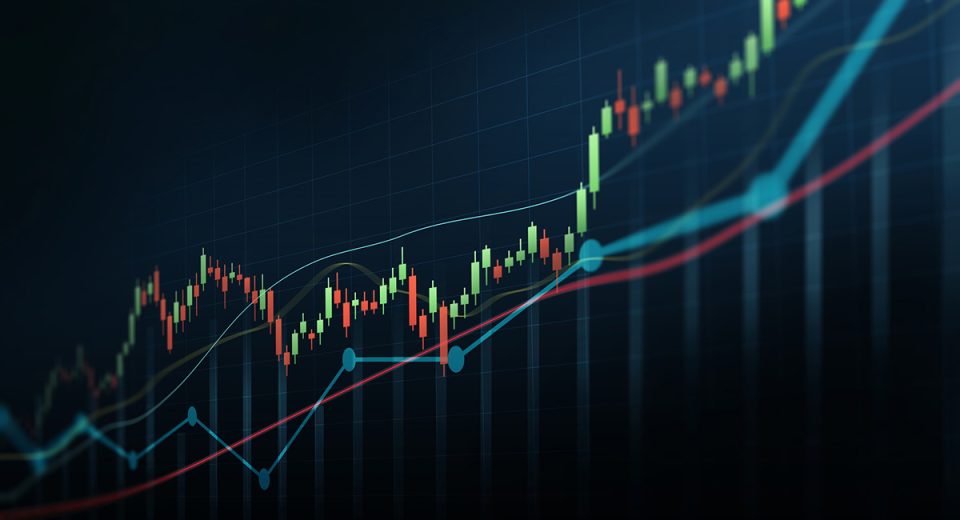Most Common Trend Reversal Patterns

Being able to identify price patterns that indicate a change in market direction is an extremely useful skill for traders. Trend reversals enable traders to identify entry and exit points, while helping them maximise gains from a winning trade. The knowledge of trend reversals, using candlestick chart patterns, is key for both trend and reversal traders. Here’s a look at some chart patterns that indicate a possible trend reversal.
Single Candlestick Trend Reversal Pattern: Pin Bar
The pin bar is one of the most traded reversal patterns. A pin bar is a candlestick that appears after a continued trend and indicates a reversal. This is a popular technique for high-speed forex traders, such as scalpers, who take advantage of the smallest price changes.
A bullish pin bar occurs after a downtrend. After multiple red candlesticks, a small green candlestick appears. This candlestick is very short in height, about one-third of the previous red candlestick, and is formed closer to its bottom. It has a long shadow, indicating a decline in the strength of bears in the market. If the candlesticks following the pin bar are green, with increasing height and short wicks and shadows, this signals the onset of an uptrend.
A bearish pin bar appears when a rising market is about to reverse. After a series of green candlesticks, the red candlestick is formed with a wick similar in length to its previous green candlestick. The red candlestick is about one-third in length and appears at the top of the previous green one. Candlesticks following the bearish pin bar are red and longer, with shorter wicks and shadows marking the downtrend.
Double Candlestick Trend Reversal: Engulfing Pattern
Traders often use engulfing patterns to identify trend reversals.
A bullish engulfing pattern is formed when a green candlestick engulfs a red one in a falling market. This means that the top and bottom of the green candlestick lie outside those of the red one and it has a tiny wick and shadow. As the bullish candle engulfs the bearish candle, traders notice the trend reversal and prepare to take long positions.
A bearish engulfing pattern is observed when the top and bottom of a red candlestick lie outside those of the previous green candlestick. Traders identify the reversal and confirm it with one or two following red candlesticks to take short positions.
Multi-Candlestick Reversal Patterns
There are several multi-candlestick patterns. Traders often simply use the price line to identify these patterns to view a broader timeframe.
Double Top and Double Bottom
Double tops occur after a significant uptrend and double bottoms after a downtrend.
In a double-top pattern, the price forms a peak and then declines to a support level. The price rises back again to a peak of the same height and is often accompanied by a fading upward momentum. This indicates that bulls are becoming weak and cannot sustain the uptrend. A downward reversal begins as the price declines from the second peak and is confirmed after it breaches the support level again. This is the time when traders go short on the instrument.
A double bottom indicates a reversal in falling markets. After a significant decline, the price tests a resistance level. It reverses in the downward direction to reach the previous bottom (valley). Finally, as bullish momentum intensifies, the price rises again, breaking out above the resistance level, reversing to an uptrend. A price breakout after a double bottom is a signal to go long.
Head and Shoulders and Inverse Head and Shoulders
Head and shoulders are also multi-peak/valley patterns to identify the reversal in an uptrend or a downtrend.
As the name suggests, the head and shoulders pattern looks like the human head and shoulders. During an uptrend, a peak (left shoulder) is formed from where the price reverses to a support level called the neck. From the neck, the price is driven by bullish traders much higher than the first peak, forming the head of the pattern. The price reverses from the head, hits the neck again and bounces off it to trace a third peak, similar in height to the first one. This is the right shoulder. As the price reverses from the shoulder, it begins a downtrend, marking the reversal. A good practice among traders is to confirm the reversal after the price breaks below the neck before taking short positions.
Inverse head and shoulders is a reversal pattern from a downtrend. The left and right valleys are the shoulders and are similar in height. The head is the middle valley, which is deeper than both shoulders. The downward trending price forms the left shoulder, trying to test the bears. It changes direction again to bounce off the resistance (neck) to form the head. It reverses again to reach the neck and bounces off to form the second shoulder. Finally, the bulls break the price out of the downtrend and reverse it to complete the pattern. As the price breaches the resistance, it begins to climb in an uptrend. This is when traders prefer to take long positions.
Morning / Evening Star
The morning star,a bullish reversal signal, is formed when a long red candle is followed by a green candle with a small body that appears below the first one and another green candle is formed that closes significantly above the red one.
The evening star,a bearish reversal signal, is formed when a long green candle is followed by a small red candle appearing below the first one and another red candle is formed that closes significantly below the green one.
To Sum Up
- Trend reversals help traders to identify entry and exit points.
- A pin bar is a single candlestick pattern to trade trend reversals.
- Engulfing reversal patterns are popular among the two-candlestick trend reversal patterns.
- Head and shoulders, double-top/bottom, and morning/evening stars are popular multi-candlestick patterns.
Disclaimer:
All data, information and materials are published and provided “as is” solely for informational purposes only, and is not intended nor should be considered, in any way, as investment advice, recommendations, and/or suggestions for performing any actions with financial instruments. The information and opinions presented do not take into account any particular individual’s investment objectives, financial situation or needs, and hence does not constitute as an advice or a recommendation with respect to any investment product. All investors should seek advice from certified financial advisors based on their unique situation before making any investment decisions in accordance to their personal risk appetite. Blackwell Global endeavours to ensure that the information provided is complete and correct, but make no representation as to the actuality, accuracy or completeness of the information. Information, data and opinions may change without notice and Blackwell Global is not obliged to update on the changes. The opinions and views expressed are solely those of the authors and analysts and do not necessarily represent that of Blackwell Global or its management, shareholders, and affiliates. Any projections or views of the market provided may not prove to be accurate. Past performance is not necessarily an indicative of future performance. Blackwell Global assumes no liability for any loss arising directly or indirectly from use of or reliance on such information here in contained. Reproduction of this information, in whole or in part, is not permitted.




